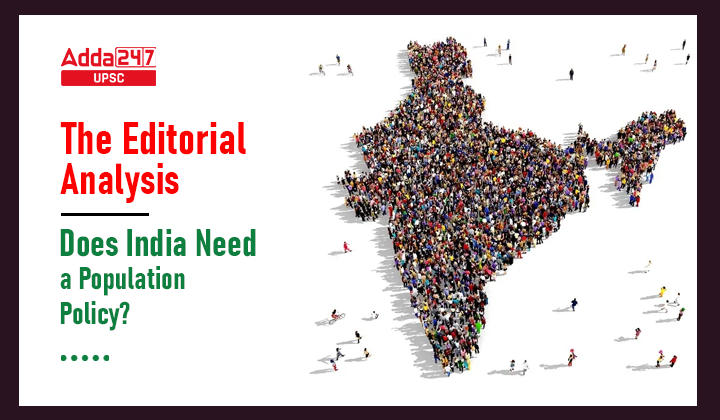Table of Contents
Relevance for UPSC
GS 1: Population and Associated Issues
Context
- Earlier this year, the United Nations published data to show that India would surpass China as the world’s most populous country by 2023.
- According to the 2018-19 Economic Survey, India’s demographic dividend will peak around 2041, when the share of the working age population is expected to hit 59%.
What United Nations’ World Population Prospects (WPP), 2022 tell about India?
- The United Nations’ World Population Prospects (WPP), 2022, forecasts India becoming the most populous country by 2023, surpassing China, with a 140 crore population.
- This is four times the population India had at the time of Independence in 1947 (34 crore).
- Now, at the third stage of the demographic transition, and experiencing a slowing growth rate due to constant low mortality and rapidly declining fertility, India has 17.5% of the world’s population.
- As per the latest WPP, India will reach 150 crore by 2030 and 166 crore by 2050.
- In the 1960s, India had a population growth rate of over 2%.
- At the current rate of growth, this is expected to fall to 1% by 2025.
- However, there is a long way to go for the country to achieve stability in population. This is expected to be achieved no later than 2064 and is projected to be at 170 crore (as mentioned in WPP 2022).
Do we need a population policy?
- India has a very good population policy, which was designed in 2000. And States also have their population policies.
- We just need to tweak these and add ageing to our population policy focus. But otherwise, the national population policy is the right policy.
- We need more investments in family planning and need to think about the population more broadly.
What is demographic dividend?
- According to United Nations Population Fund (UNFPA), demographic dividend means ”The economic growth potential that can result from shifts in a population’s age structure, mainly when the share of the working-age population (15 to 64) is larger than the non-working-age share of the population (14 and younger, and 65 and older)”.
The demographic dividend of India
Growth of working age population
- In the last seven decades, the share of the working age population has grown from 50% to 65%, resulting in a remarkable decline in the dependency ratio (number of children and elderly persons per working age population).
WPP 2022 report
- As in the WPP 2022, India will have one of the largest workforces globally, i.e., in the next 25 years, one in five working-age group persons will be living in India.
- This working-age bulge will keep growing till the mid-2050s, and India must make use of it.
Why should India plan for the elderly and Ageing?
- Ageing is going to be an issue for us. We need to figure out how to address ageing in the context of changing families and the nature of state support in India and create conditions in which the elderly population can have a healthy and happy life.
- In the case of the elderly, the estimates show that 12% of India’s total population by 2025 is going to be the elderly.
- Every fifth Indian by 2050 will be over the age of 65.
- So planning for these segments merits equal consideration.
What kind of population policy do we need?
- We need a policy that supports reproductive health for individuals.
- We also need to start focusing on other challenges that go along with enhancing reproductive health, which is not just the provision of family planning services.
- We need to change our discourse around the population policy. Although we use the term population policy, population control still remains a part of our dialogue.
- We need to maybe call it a policy that enhances population as resources for India’s development, and change the mindset to focus on ensuring that the population is a happy, healthy, productive.
- Perhaps it is time to think about getting rid of some of the archaic notions around population control, which continue to persist.
- Our arguments and discussions have not gone beyond the two-child norm. The two-child norm indicates a coercive approach to primarily one community.
Conclusion
There are too many myths and misconceptions around population issues, which lead to this discourse, which takes away attention from doing all the necessary things. We need to address them in larger perspective.



 TSPSC Group 1 Question Paper 2024, Downl...
TSPSC Group 1 Question Paper 2024, Downl...
 TSPSC Group 1 Answer key 2024 Out, Downl...
TSPSC Group 1 Answer key 2024 Out, Downl...
 UPSC Prelims 2024 Question Paper, Downlo...
UPSC Prelims 2024 Question Paper, Downlo...
